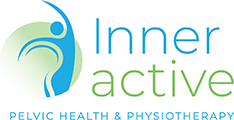4 years ago I had my life changing abdominoplasty surgery.
I am very grateful for my body and strength since having this surgery although my recovery was not an easy journey.
My goal is to share some of the details that influenced my decision to undergo this surgery.
Background information
DRAM (diastasis of the rectus abdominis) involves the separation or stretching of the linea alba (connective tissue) between your abdominal muscles. It can cause doming or bulging appearance along the centre of your stomach that can be aggravated by lifting or contracting your abdominal muscles.
This is a normal process that occurs during pregnancy where the abdominal wall begins to stretch to accommodate the needs of the growing baby and uterus.
In most case, DRAM will recover well in the early weeks and months after delivery, however in severe cases, the muscles may remain significantly separated. If the connective tissue remains significantly stretches and the muscle bellies (primarily rectus abdominus) separate. As a result, this can interfere with the body’s ability to transfer load effectively in daily living tasks.
My personal story
With my first pregnancy I developed what would be classified as a ‘moderate to severe’ DRAM along with an umbilical hernia. Neither the DRAM or hernia recovered, despite allowing time and with rehabilitation of my abdominal muscles.
I noticed my DRAM became noticeably worse after my second pregnancy. At this point, it was measuring a 6 cm separation. Unfortunately I had some other symptoms such as low back pain, stress incontinence and aesthetically I was extremely unhappy with the way my stomach appeared.
I felt extremely weak in my ‘core’ and this impacted my results not to mention performance with weight training.
What is an Abdominoplasty?
Abdominoplasty (also known as a tummy tuck) surgery involves the removal of excess fat and skin to improve the shape and tone of the abdominal area.
In addition, it can also repair separated muscles by drawing in the muscle and pulling the connective tissue together with sutures.
Tummy tuck procedure requires a horizontal incision around the pubic hairline. General anaesthesia is administered for surgery. Sutures, skin adhesives and tapes close the skin incisions from the tummy tuck surgery.
I made the decision to book in for an Abdominoplasty and hernia repair in October 2020. At this point of time, I was approximately 14 months post-partum.
I researched for a couple of months to find an experienced and exceptional qualified surgeon with the guidance of my pelvic health physiotherapist (Yes, L also needed a women’s health physio).
After reading great reviews and connecting with previous patients ( who had undergone abdominoplasty), I booked a consult with a surgeon who came higly recommended from my healthcare team.
My first consultation with him was a positive experience. He had numerous qualities that made me feel comfortable. He presented with great rapport, kind and humble qualities.
My actual surgery involved 90 minutes in theatre. I was eligible for a Medicare rebate only for the hernia repair.
The actual break down of the costs included all review visits for 12 months, rapid recovery kit and support garment, post op healite treatment, post-op appointments with a dermal clinical for scar treatments such as laser.
Medicare changes (visit HERE for more information)
Currently, there has been some positive changes for women requiring abdominoplasty since Medicare has created a new MBS item for rectus diastasis repair. T
For further information please refer to the Medicare Benefits Schedule or as your doctor.
Road to recovery
I won’t sugar coat how challenging my recovery was. Having two children to care for whilst recovering from an invasive abdominal surgery was no walk in the park.
However I am so fortunate and thankful for the supportive network I had access to including my rehabilitation team, following the necessary guidelines and ensuring I followed the necessary recommendations including ensuring I was not exerting myself or doing the wrong /exercises that would impact my recovery. Without my family support, I wouldn’t have been able to undergo this major surgery.
It did take a whole month to return to work as a physiotherapist and slowly but surely commence in a safe return to exercise.
My journey to return to exercise was long and challenging.
However now 4 years post abdominoplasty, I have never felt stronger and happier. I regained my confidence and self-esteem back and am now kicking goals with weight training. I have no regrets!
My goal is to empower and educate women who have a significant DRAM and considering surgery.
Written by
Melis Abdulovski
Women’s Health Physiotherapist
Inner Active Pelvic Health and Physio
To Book an Appointment with Melis HERE
